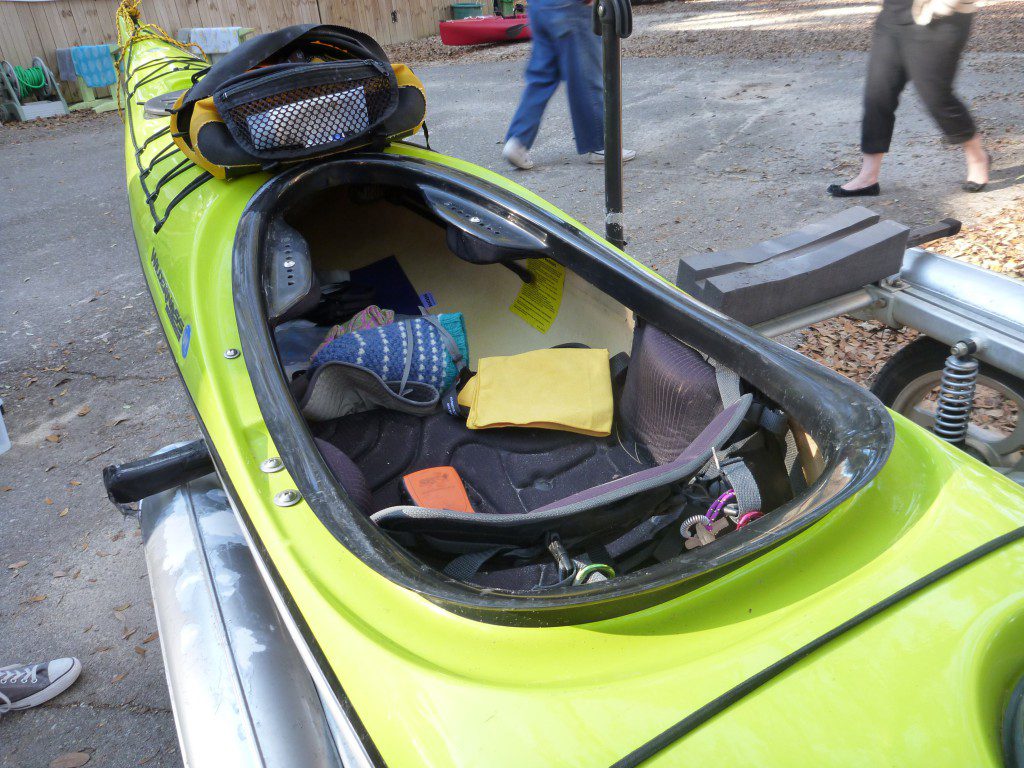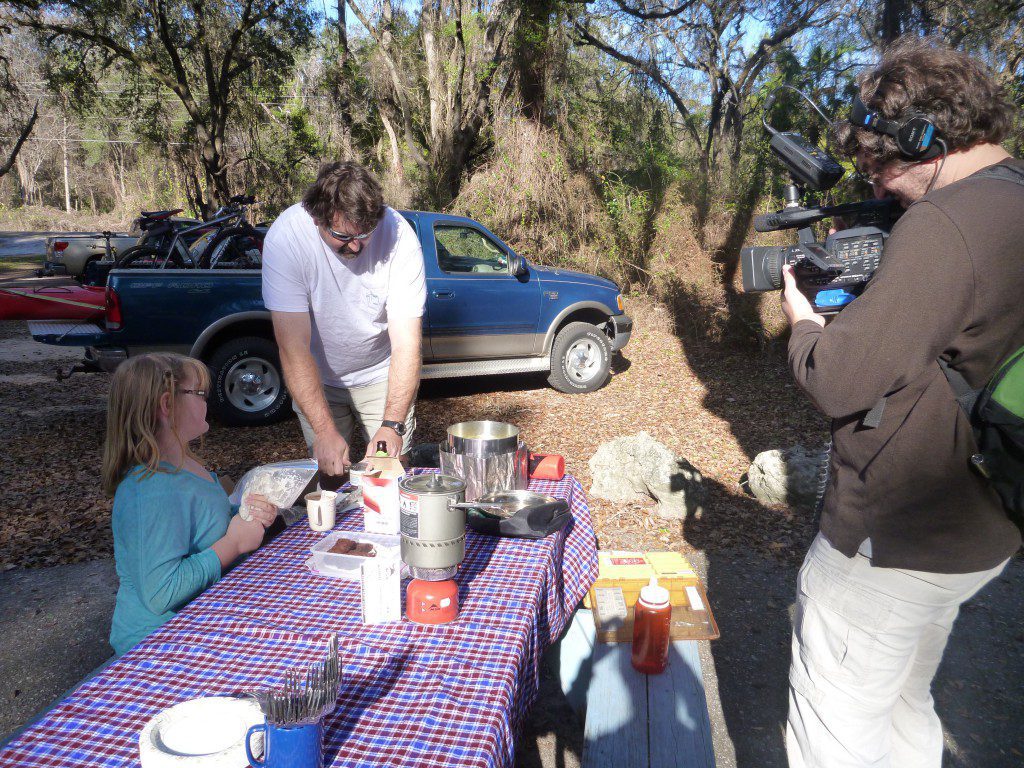Rob Diaz de Villegas WFSU-TV
 Our last post was a list- some very useful resources to help plan a kayak camping trip. This post is a list as well: a collection of handy tips; things I would have included in the video segment above if I had more than six minutes.
Our last post was a list- some very useful resources to help plan a kayak camping trip. This post is a list as well: a collection of handy tips; things I would have included in the video segment above if I had more than six minutes.
1. If you haven’t kayak camped before, start with a short, one or two day trip.
2. Know when hunting seasons are where you’re paddling. If it will be hunting season during your trip, wear bright colors and be mindful.
3. Greg Blakney, who cooked the chicken and dumplings in the above segment, shared some cooking tips that didn’t make it into the piece. One is that olive oil can be substituted for butter in many recipes, which is good as butter needs refrigeration. Another is that condiment packets found in restaurants are conveniently packaged for camping.
4. While we’re on the subject of food, Rick and Georgia have a strategy for how they pack meals. On longer trips, Rick likes to separate all of his meals into separate bags: one for breakfasts, one for lunches, and one for dinners. Georgia keeps her lunch in her deck bag, tied to the top of her kayak. Organizing the meals this way keeps them more accessible, and prevents you from having to unpack your entire bag to get your food.
5. If you haven’t kayak camped before, you may not be used to how your kayak paddles when loaded up with gear. Rick recommends packing it a day before and getting a feel for it before you set out.
6. Also when packing a kayak, put heavier items towards the middle. This will make your kayak more stable to paddle.
 7. Dry bags that are tapered at the ends fit well at the bow and stern of the kayak, which themselves taper to points. The name of the game is fitting your gear to the unique features of your kayak. Your hatches are arranged a certain way, and you may have features like a skeg (kind of like a rudder) that bisects the bottom of the rear of your kayak.
7. Dry bags that are tapered at the ends fit well at the bow and stern of the kayak, which themselves taper to points. The name of the game is fitting your gear to the unique features of your kayak. Your hatches are arranged a certain way, and you may have features like a skeg (kind of like a rudder) that bisects the bottom of the rear of your kayak.
8. We included Georgia talking about water in the piece, but this is important enough to expand upon in more detail. Water is the heaviest thing you will pack. It’s also the most essential to your survival. Georgia and Rick typically pack 15-20 lbs. of water for a two day trip. Georgia figures she packs 30-40 lbs. of gear for a long trip. I didn’t clarify if that included water, but regardless, that’s a heavy ratio of water to everything else. And after two days or so, you would still need to refill.
9. When traveling in a group, talk to everyone about what they’re bringing. This way, you can eliminate redundant items and lighten the load on everyone’s kayaks. If you’re trekking with ten people, you may only need two or three tubes of sunscreen instead of ten.
10. Not everything you bring can be obviously classified as outdoor gear. For example, duct tape. It can be used to repair a broken paddle or patch a hole in your tent. Another is a bandana. Georgia points out that she doesn’t wear anything cotton on trips. This makes sense, as a lot of outdoor wear consists of quick-drying synthetic fibers. A bandana can be used to clean your sunglasses or wipe your face or neck.

